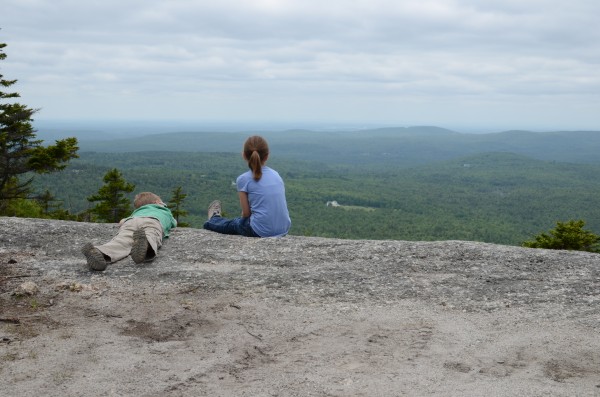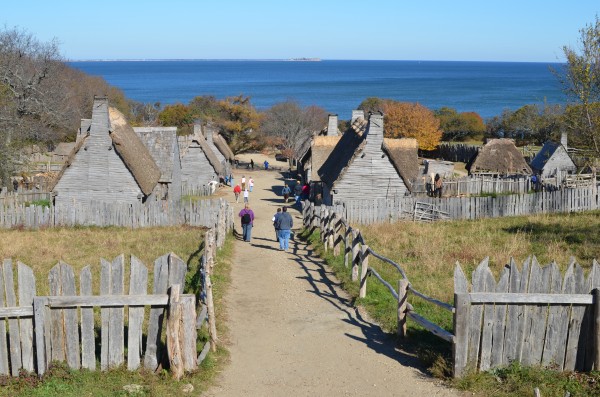Last Child in the Woods ~ The NEED for Nature
I’m back with more thoughts on Last Child in the Woods by Richard Louv. Nicole from Journey to Excellence is hosting an informal book study, and you can read her thoughts on Chapter 5, 6, and 7 and Chapter 8. Be sure to head over to her blog to read her thoughts and those of others participating in this interesting book discussion. I was a little behind so I’m here to share my thoughts on Chapters 5-8, which are all in a section of the book explaining why we need nature.

I’d commented at the end of my thoughts on Chapters 1-4 that I thought reading this book would make time in nature move higher up my priority list–and this section of the book has definitely done that! Chapter 5 discussed how nature develops the senses. I was especially intrigued by his thoughts on “primary experience” and how most of what children get these days is dual-sensory information from television and computers, with fewer direct experiences doing and building with all their senses. The section on “packaged nature” reminded me of the difference in listening to a thunderstorm CD versus watching the flashes of lightning and feeling the power of an actual thunderstorm outside your window. I agree with Nicole’s feelings of videos online being far less engaging for my children than a hands-on experience. We had read loads of books and watched shows about the Pilgrims, but nothing cemented it for my kids like our trip to Plimouth Plantation to be immersed with all our senses in what life was like for the Pilgrims.

Chapter 6 delved into the theory of multiple intelligences developed by Howard Gardner, and the relatively recent addition of an 8th intelligence termed “nature smart.” I love the description on page 78: “Perhaps the eighth intelligence is the intelligence within nature, the lessons waiting to be delivered if anyone shows up.” The discussion with a landscape architect talking about designing more natural outdoor spaces had me really brainstorming ideas for my yard. What can I incorporate in my small suburban yard to make it more wild and natural, and thus more stimulating to the senses and imagination?
Chapter 7 talked about “loose-parts” toys that are open-ended, allowing children to use them in multiple ways. This is one of the sections in the book where I found myself generalizing and applying the ideas to not just time in nature, but childhood in general. I have often bemoaned the trend in children’s toys having a single way to play with them. It’s why I’ve always leaned towards things like building blocks and dolls that require imagination and creativity. Coming back to nature, I want to incorporate more “loose parts” for outdoor play and make sure as I garden and landscape around our small yard I am thinking of stimulating my children’s outdoor play.
Nicole was right when she said Chapter 8 was a meaty chapter, and I found myself taking copious notes. Even in the early grades I was struck by how little recess my daughter had at school, and I know it is even worse in other areas. (I had to laugh at the quote: “Lifers at Leavenworth get more time in the exercise yard.”) What I think makes it especially hard for children these days is that when they get home they have homework at a far younger age, and then if you try to add enrichment like music lessons they have even less free time and exercise. I am thankful for the ability to homeschool…if my children were in public school it would be harder to dramatically increase their contact with nature. The reiteration of time in nature as restorative, allowing you to come back with better ability to focus, really hits home for me. My son is a very active boy, and even in preschool the teachers raised questions about his ability to pay attention. Like Nicole mentioned with her son, I am confident he doesn’t have ADHD because he can focus for long periods of time if something is interesting to him. I do notice his attention waning sometimes at home, and up until now I would try to push through and finish our schoolwork so he could then have his free time. My new plan after reading this is going to be to take a break to head outside, and finish the schoolwork with better focus after we’re all refreshed.
There were two other things I took away from chapter 8. One, like Nicole mentioned, was about where we do our schoolwork. The study on the benefits of even a view of nature on focus and concentration was interesting. In a happy coincidence I recently rearranged our schoolroom so both kids have a better view out the windows, but I am going to focus more on what they see out the window. I’m thinking of adding another bird feeder there, or maybe a birdbath. Another piece of information from this chapter requires a little rearranging for me. A work-in-progress study seems to show that a walk in a natural setting is more beneficial than a walk in a manicured residential area. As I said in my earlier post, we get outside nearly every day but usually for a walk around our neighborhood. I am going to make it a goal to head to more natural areas for our walks more often. Like Nicole says, as parents we just need to make the effort.
 Hi, I'm Heidi and I homeschool my two sweet kids. I want them to know that learning is an exciting lifelong adventure! We love great books, unit studies, notebooking, lapbooking, and hands-on learning.
Hi, I'm Heidi and I homeschool my two sweet kids. I want them to know that learning is an exciting lifelong adventure! We love great books, unit studies, notebooking, lapbooking, and hands-on learning.



